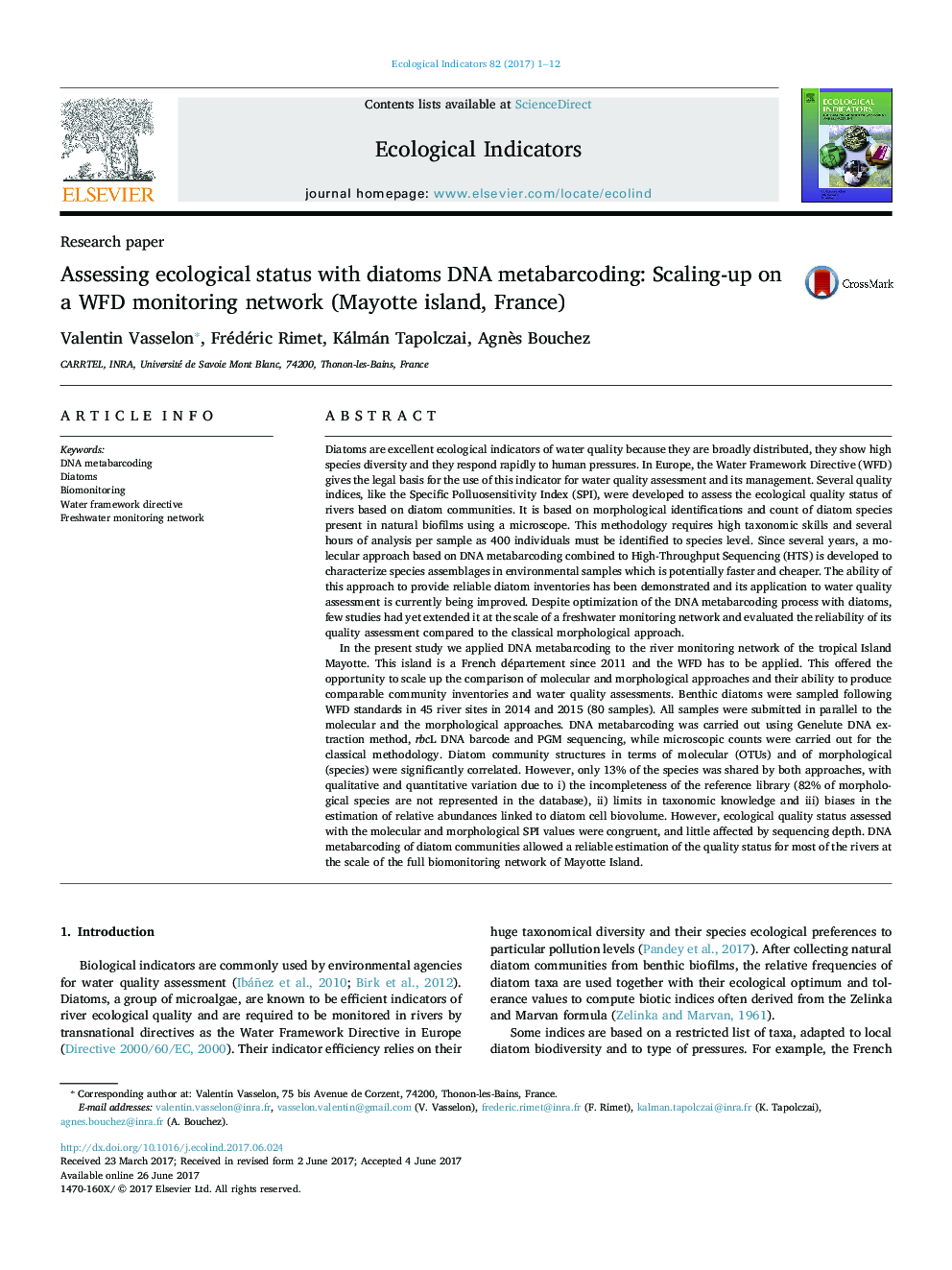| کد مقاله | کد نشریه | سال انتشار | مقاله انگلیسی | نسخه تمام متن |
|---|---|---|---|---|
| 5741303 | 1617120 | 2017 | 12 صفحه PDF | دانلود رایگان |

- Use of DNA metabarcoding for freshwater quality assessment using benthic diatoms is proposed.
- The comparison with the morphological approach is performed at the scale of the WFD monitoring network in a French Island.
- The quality status of rivers was similarly evaluated by molecular and morphological methods.
Diatoms are excellent ecological indicators of water quality because they are broadly distributed, they show high species diversity and they respond rapidly to human pressures. In Europe, the Water Framework Directive (WFD) gives the legal basis for the use of this indicator for water quality assessment and its management. Several quality indices, like the Specific Polluosensitivity Index (SPI), were developed to assess the ecological quality status of rivers based on diatom communities. It is based on morphological identifications and count of diatom species present in natural biofilms using a microscope. This methodology requires high taxonomic skills and several hours of analysis per sample as 400 individuals must be identified to species level. Since several years, a molecular approach based on DNA metabarcoding combined to High-Throughput Sequencing (HTS) is developed to characterize species assemblages in environmental samples which is potentially faster and cheaper. The ability of this approach to provide reliable diatom inventories has been demonstrated and its application to water quality assessment is currently being improved. Despite optimization of the DNA metabarcoding process with diatoms, few studies had yet extended it at the scale of a freshwater monitoring network and evaluated the reliability of its quality assessment compared to the classical morphological approach.In the present study we applied DNA metabarcoding to the river monitoring network of the tropical Island Mayotte. This island is a French département since 2011 and the WFD has to be applied. This offered the opportunity to scale up the comparison of molecular and morphological approaches and their ability to produce comparable community inventories and water quality assessments. Benthic diatoms were sampled following WFD standards in 45 river sites in 2014 and 2015 (80 samples). All samples were submitted in parallel to the molecular and the morphological approaches. DNA metabarcoding was carried out using Genelute DNA extraction method, rbcL DNA barcode and PGM sequencing, while microscopic counts were carried out for the classical methodology. Diatom community structures in terms of molecular (OTUs) and of morphological (species) were significantly correlated. However, only 13% of the species was shared by both approaches, with qualitative and quantitative variation due to i) the incompleteness of the reference library (82% of morphological species are not represented in the database), ii) limits in taxonomic knowledge and iii) biases in the estimation of relative abundances linked to diatom cell biovolume. However, ecological quality status assessed with the molecular and morphological SPI values were congruent, and little affected by sequencing depth. DNA metabarcoding of diatom communities allowed a reliable estimation of the quality status for most of the rivers at the scale of the full biomonitoring network of Mayotte Island.
248
Journal: Ecological Indicators - Volume 82, November 2017, Pages 1-12